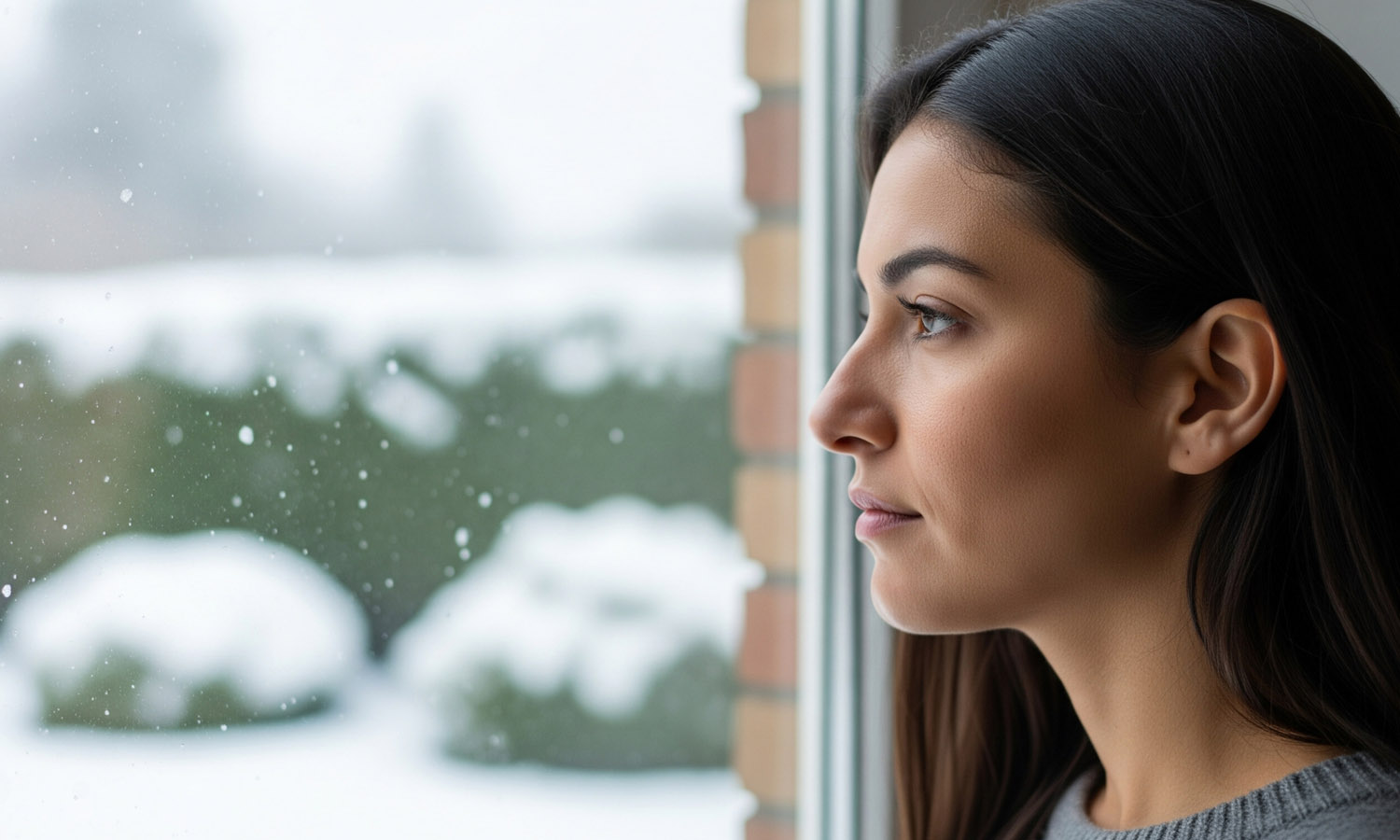
As the earth tips away from the sun and our days grow short, many in Washington experience a distinct change in mood. Energy levels drop, motivation decreases, and a sense of gloom matches the cold, gray weather. Mental health providers call this change in mood a depressive disorder with seasonal pattern, but it’s also known as the winter blues and, in extreme cases, seasonal affective disorder (SAD).
A common condition in our area
Not surprisingly, northern states have the highest percentage of people who experience the winter blues. According to a Forbes study, Alaska, Oregon, Washington, and Idaho all have higher rates of seasonal depression, with West Virginia rounding out the top five. Florida and Hawaii, not surprisingly, have the lowest rates of winter blues. In Washington state, the statistics are striking— about 5 to 7% of adults experience significant seasonal depression, while another 14% endure milder symptoms. All told, more than 20% of Washingtonians report changes to their mood during this time of year.
Dr. Christine Heller has observed the impact of changing seasons on mood for years. “Growing up in Seattle, I’ve always been familiar with the ways that the Pacific Northwest’s winter gloom can impact mood,” said Heller, a psychologist with Kinwell’s East Wenatchee clinic. “My interest about treating the winter blues peaked when I moved to Anchorage, Alaska, for my clinical psychology doctoral internship. Around the winter solstice, the sun was only above the horizon for five hours a day, going straight from dawn to dusk. I was amazed by the impact this had on many people living there, slowing things down and really intensifying the fatigue, low motivation, and loss of interest that people can experience with seasonal depression.”
The science behind SAD
SAD typically develops in young adulthood and is approximately four times more common in women. Individuals who experience premenstrual mood changes are also at a higher risk of developing SAD, and those with a history of depression are more susceptible to seasonal depression.
The research into seasonal mood changes has linked the condition to the reduced exposure to sunlight during the winter. Less sunlight can lower serotonin and vitamin D levels, both of which play a role in regulating mood. Changes in sunlight exposure also affect how your body produces melatonin, the hormone responsible for sleep cycles, and can disrupt your circadian rhythm.
A new option for treatment
The good news is that support is available for patients who experience seasonal depression, or whose depression worsens through the winter months. Understanding the causes of the winter blues and how to respond to them can help patients regain their emotional balance and well-being. Kinwell’s new winter blues program offers a comprehensive approach to understanding and treating seasonal depression. Dr. Heller will lead a group of patients in exploring techniques to counteract the effects of shorter, darker days.
“I am happy to share this program for the first time with the Kinwell community,” said Heller. “Although Washington is not as far north as Alaska, getting the winter blues is quite common here. Rather than dread and merely tolerate winter, I want to help patients prevent and cope with seasonal depression so that you can enjoy meaningful activities throughout the year.”
Patients will learn why changes in brain chemistry during the winter months can impact energy and mood, and why some people are more prone to getting the winter blues. Special emphasis will be placed on how light therapy can increase energy and shift mindset to a more neutral or even positive perspective about winter. The group nature of these online appointments reinforces the importance of staying engaged with a social network even when it is dreary outside. Each patient will create a personalized winter blues survival plan that will help them navigate the season after the six-week program ends.
Get the help you need
Don’t let the winter blues define your season. Kinwell’s supportive program can help you navigate a brighter path even in the darkest months. To register for this program, call 206-360-9298.
Everyone’s journey through the winter blues is unique. If you prefer individualized attention, Kinwell also offers one-on-one behavioral health services. Established patients can connect with a behavioral health provider who can tailor support to your specific needs by calling 833-411-5469.
If you are experiencing suicidal thoughts, dial 988 to talk to someone at the crisis lifeline.
Dr. Christine Heller is a licensed psychologist who specializes in primary care behavioral health. She is based in Kinwell’s East Wenatchee clinic.
References
Higley, L. (2011). Don’t be SAD: Lack of Light in Winter can Lead to Depression for Many. The Spokesman Review: https://www.spokesman.com/stories/2011/nov/08/sad/
“Seasonal Affective Disorder (SAD).” Mayo Clinic, Mayo Foundation for Medical Education and Research, www.mayoclinic.org/diseases-conditions/seasonal-affective-disorder/symptoms-causes/syc-20364651. Accessed 16 Oct. 2025.
“Seasonal Affective Disorder.” National Institute of Mental Health, U.S. Department of Health and Human Services, www.nimh.nih.gov/health/publications/seasonal-affective-disorder. Accessed 16 Oct. 2025.
Rosenthal, N.E. (1993). Winter Blues: Seasonal Affective Disorder: What it is and How to Overcome it. New York, NY: Guilford Press, Inc.


